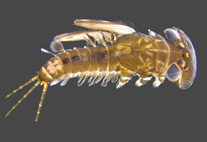Abstract
A molecular phylogeny of the sphaerodactylid geckos of the genus Pristurus is inferred based on an alignment of 1845 base pairs (bp) of concatenated mitochondrial (12S) and nuclear (acm4, cmos, rag1 and rag2) genes for 80 individuals, representing 18 of the 23–26 species, and the three subspecies of P. rupestris. The results indicate that P. rupestris is polyphyletic and includes two highly divergent clades: the eastern clade, found in coastal Iran and throughout the Hajar Mountain range in northern Oman and eastern UAE; and the western clade, distributed from central coastal Oman, through Yemen, Saudi Arabia and north to southern Jordan. Inferred haplotype networks for the four nuclear genes show that the eastern and western clades of “P. rupestris” are highly differentiated and do not share any alleles. Moreover, although the two clades are differentiated by a morphological multivariate analysis, no one character or set of characters was found to be diagnostic. Based on the molecular analysis of specimens from the type locality of P. rupestris rupestris, the name P. rupestris is applied to the eastern clade. The name that should apply to the western clade cannot be clarified until morphological and genetic data for “P. rupestris” is available from the vicinity of Bosaso, Somalia, and therefore we refer to it as Pristurus sp. 1. The phylogenetic tree of Pristurus supports the hypothesis that P. celerrimus is sister to all the other species in the analyses and that the Socotra Archipelago was independently colonized a minimum of two times.

